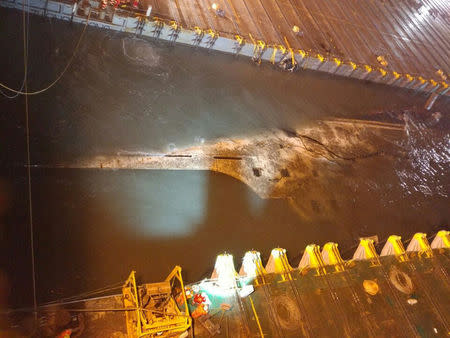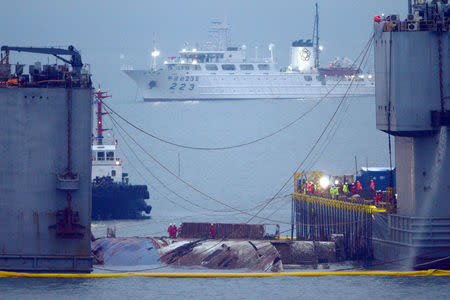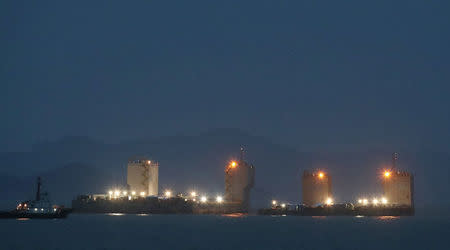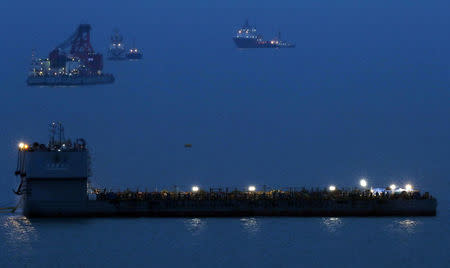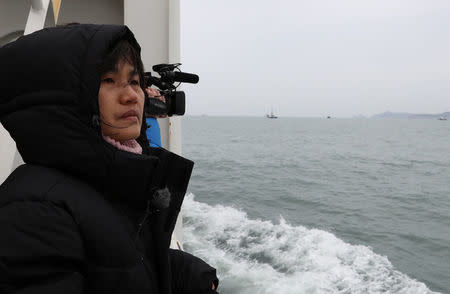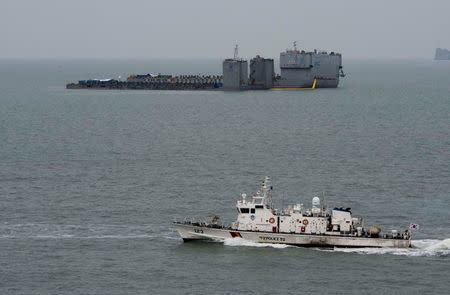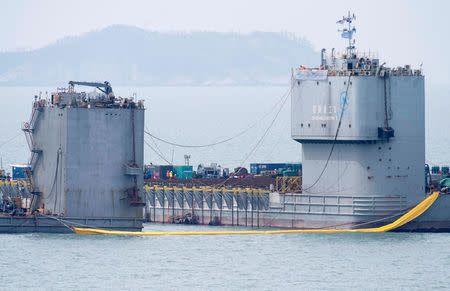South Koreans to raise sunken ferry if test of lift goes well
By Heekyong Yang SEOUL (Reuters) - Salvage experts in South Korea prepared on Wednesday to begin raising a ferry that sank nearly three years ago, killing 304 people, most of them children on a school trip, finally meeting the demands of mourning families. The ferry, the Sewol, was structurally unsound, overloaded and travelling too fast on a turn when it capsized and sank during a routine voyage on April 16, 2014. It lies at a depth of 44 metres (144 feet), off the southwestern island of Jindo. Of those killed, 250 were teenagers on a school trip, many of whom obeyed crew instructions to remain in their cabins even as crew members were escaping the sinking vessel. Bereaved families have been calling for the ship to be raised and for a more thorough investigation into the disaster. Officials also hope to find the last nine missing bodies. A Chinese salvage company has fitted 33 beams beneath the hull, and on Wednesday the system was tested with 66 hydraulic jacks raising the hull one metre off the bottom, the Ministry of Oceans and Fisheries said. Divers were inspecting the progress. "The vessel is slightly tilted and we need to even it out," Lee Cheol-jo, ministry official in charge of the operation, told reporters. If the ship can be levelled, and if the good weather holds, a decision could be made for the salvagers to go ahead and bring the ship up, the ministry said. The disaster was a blot on former President Park Geun-hye's record in office that she was never able to clear. Park was accused of failing to take decisive action after news broke that the ferry was in trouble. She denied that, but she never fully explained what she was doing during the seven hours between the first news reports and her first television appearance that day. Her response to the disaster was again raised in recent months after she came under suspicion in the course of an investigation into a corruption scandal that led to her dismissal from office on March 10. The salvage is costing about 85 billion won ($75 million), another ministry official said this week. (Additional reporting by Ju-min Park; Writing by Robert Birsel; Editing by Simon Cameron-Moore)

 Yahoo News
Yahoo News 